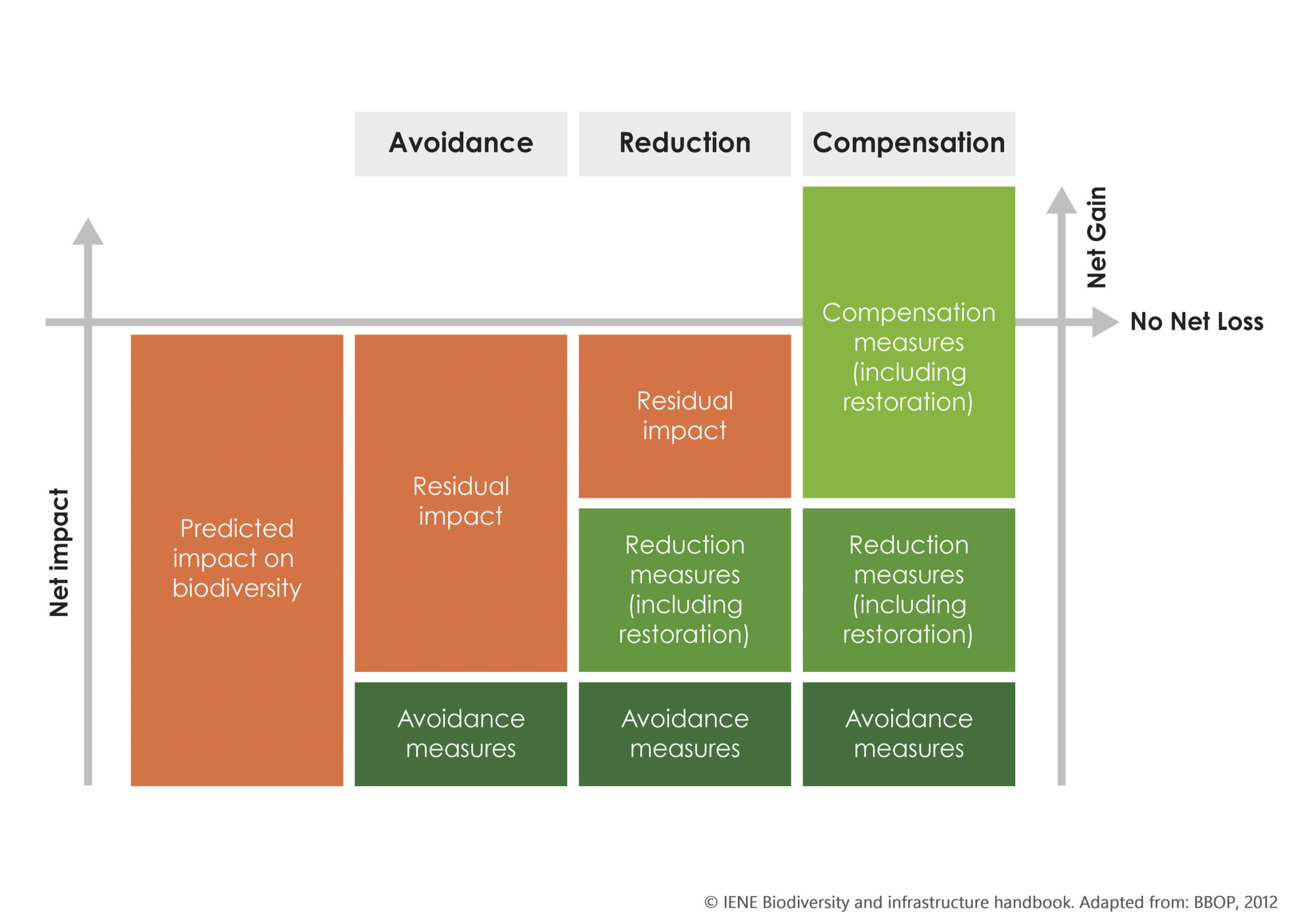Overview
The mitigation hierarchy is a conceptual framework designed to manage impacts on biodiversity. Applied to any impact assessment, here we describe it as a 3-step iterative sequence: Avoidance-Reduction-Compensation (ARC mitigation sequence). If applied to direct, indirect, and cumulative impacts, the mitigation hierarchy can greatly reduce negative effects and is key to pursuing No Net Loss (NNL) or Net Gain (NG) of biodiversity in projects, programmes and plans. NNL or NG implies that no biodiversity has been lost or some biodiversity has been gained at the end of the project life cycle compared to a previously established baseline condition. The mitigation hierarchy is considered in Strategic Environmental Assessment (SEA) and Environmental Impact Assessment (EIA) EU directives, although the way they are interpreted and implemented varies greatly between member states.
A wider territorial approach including a strong cumulative effect assessment to identify impacts on ecosystems and not only on protected species or areas is required within the SEIA and EIA processes. To achieve the goals of NNL or NG, interactions between mitigation measures must be considered through strategic landscape planning.
Main messages
- Avoidance: it includes measures designed to suppress the impacts on biodiversity of a project, a plan or a programme. This is the most effective action to limit impacts. Avoidance measures in impact assessment may be geographical, temporal or bring changes in the original design of a project. Most avoidance occurs in the first phase of the project life cycle.
- Reduction: these measures are undertaken to decrease the impact when no more avoidance is possible. Reduction measures, which include ecological restoration, are intended to minimize impact, either by decreasing magnitude, partly suppressing the impact, via for example geographical, temporal measures or setting structures to reduce impacts such as wildlife passages combined with fencing. Reduction measures are designed early in the project cycle but implemented during the construction phase and should be monitored across the entire cycle.
- Compensation: impacts that cannot be avoided or reduced are known as residual impacts. Compensation aims to balance these residual impacts to achieve NNL or NG through offsets or accompaniment measures. Offsets involve the management of biodiversity to obtain measurable conservation outcomes and show an ecological gain has been achieved through restoration or creation of new habitats. Compensation is the least effective measure of the mitigation hierarchy. Current practices focusing on the compensation step, result in mixed outcomes, which fail to reach the ambitions of NNL or NG. Moreover, its rules and implementation are highly variable across EU member states. Compensation measures should be designed early in the project cycle, implemented, and monitored for the whole project duration.
- Accompaniment measures aim to ensure better application of avoidance, reduction or compensation measures. They enable the progress of mitigation hierarchy implementation but do not compute in the NNL/NG assessment.
Actions to take
- Strong focus on avoidance, as the only measure that guarantees the absence of impact, is highly recommended.
- The mitigation hierarchy should be applied in full, not only at design but also at strategic phase. The aim is to strengthen biodiversity considerations in the execution of SEA assessments to influence subsequent assessments processess. A strategic approach also allows the consideration of cumulative impacts in the application of mitigation hierarchy.
- Consider the interaction between avoidance, reduction and compensation measures in strategic landscape planning to pursue NNL and NG net gain goals.
- For a successful compensation process, appropriate classification of mitigation measures should be established to determine the significance and extent of residual impacts.
- Equally important is defining the compensation approach, targets for compensation, equivalency principles, and identifying appropriate currencies and metrics to implement and monitor compensation.
- More research is needed to determine to what extent and under which conditions the current ecological compensation practices are achieving NNL or NG for biodiversity.
- Dissemination of effectively implemented cumulative effect assessment case studies and operational tools which predict and manage the cumulative impacts of infrastructure are key to halting biodiversity loss and achieving the goals of the EU Biodiversity Strategy for 2030.
